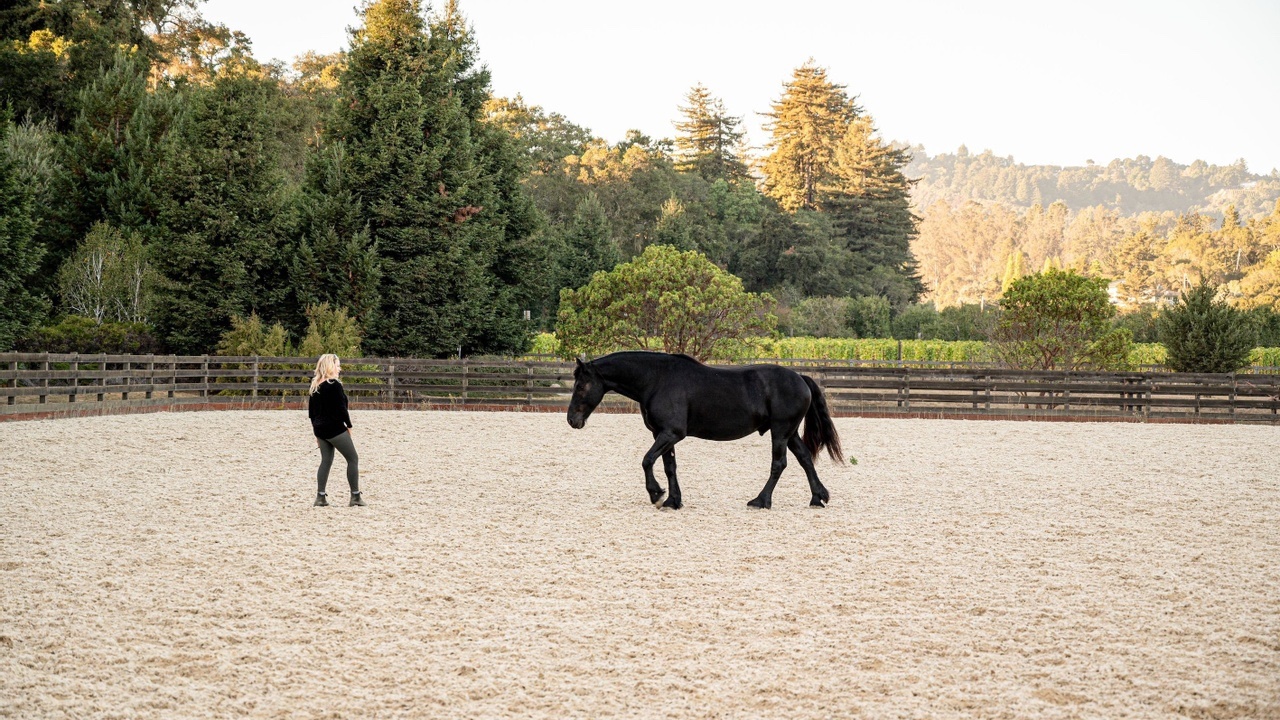Principles and Guidelines to Design Your Warm-Up Program (For the Seasoned Horse and Rider)

What all conscientious trainers have in common is their ability to bring out the best response in each horse in any given moment. This takes knowing the nature of horses and how to keep a good horse growing, starting with a good warm-up program. The primary purpose of your warm-up program is to warm up the partnership and dance that you share with your horse.
To help students with their horses I developed some principles and guidelines that are helpful to follow.
- Be sure your horse is comfortable and not distracted in the environment that you are working in. This will develop a horse to be reliable in all conditions.
- The purpose of warming up your horse is to prepare him to follow your lead effortlessly, easily, and naturally. Your leadership in the warm-up is meant to strengthen trust, respect, and build a strong connection to carry you and the horse to a higher level of performance.
- Before riding, training, and dancing, Share Territory with your horse. He will have a more positive attitude and you will have a stronger connection.
- Consider practicing Companion Walking for 10 minutes with a halter and rope, or at liberty, to wake up the energy of your horse to want to partner up with you.
- Under saddle, warm up your horse at the horse’s natural pace in walk to get in sync with you. Once you are in sync, if his walk is a bit slow, speed him up, if it is fast, slow him down and focus on getting a consistent pace on a twenty-meter circle. Once you have consistency in this speed, ride the whole arena. Then, focus on developing three speeds of walk. In his ground covering (extended walk), keep this pace for a while and then decrease your horse’s speed to the medium walk and then to a more collected walk or a slow walk on a loose rein. Between the three speeds of walk, finish by going back to the walk that he would need more practice in. Do the same thing in trot and canter.
- Whatever warm-up program you practice, keep this in mind: doing transitions of gait and changes of speed will bring a quicker response to your aids. You don’t want to do too many transitions though, as too many transitions close together can cause nervousness. Repetitive movement without any change of speed or gait will bring relaxation and a strong work ethic. Although, again, too much time doing repetitive movements can cause boredom and a loss of attention to your directional aids. A horse can check out emotionally and he can also lose the gas pedal.
- Work your horse’s gas pedal and brake responses throughout the warm-up program in three speeds of all three gaits from the ground and from the saddle.
- It is valuable to occasionally spend as much time in halt as you do in asking for performance. This will cause a horse not to anticipate and perform before you ask him to and discourages a rushy horse.
- Whatever warm-up program you design you may need to vary your program to fit the needs of the horse.
- On the ground and in the saddle, always stay away from correction. Replace correction with relaxation in halt. Return your horse to his performance when he has become relaxed from the halt.
- If your horse is nervous and confused you are asking too much. Go back to something that would create confidence and relaxation.
- Practice half halt to increase the attention and balance of your horse before the execution of several movements or transitions between gaits or paces. You prepare your horse to perform what you ask through the half halt. A half-halt is asking your horse to stop and when you know he would stop, ask him to continue on.
- Do not go along with a horse’s performance if the performance comes before your request. It can be hard to gain back your horse’s interest in following your lead if you go along with following his.
- To improve your horse’s self-carriage, if your horse is slow ask your horse to move quicker, if your horse is fast work slower. Practice half-halt. This will enliven a horse’s dance at liberty, on a lead line, and when you ride. It will help to engage the hind end, it also brings out the willingness of your horse to perform what you ask. This practice will keep your horse focused on you and your requests.
Do all the handling of your horse yourself when possible. This helps to maintain a magical connection. Remember the story of Jim Keys, the man that had the most successful life shared with a horse. He was a man that really cared for his horse, and from that care, a fortune was made from the partnership they built.
When you come from the heart and practice caretaking leadership, horsemanship is always refining itself. This way you ARE always the student of the horse and you will discover you will always have a horse in your life. Two bodies and two hearts as one, dance the dance.
May the horse be with you and stay on the lookout for new horse and human sightings.
Warmly, Carolyn Resnick
P.S. - Sign up for our FREE online course, Developing the Bond!
Click Here For Your Free Course
Would you like an opportunity to work directly with us to help you improve your horsemanship skills at Liberty? If so, book a Free Coaching Call and we will speak to you about whether you are a good fit for our online and live coaching course/clinics! Click Here and Book Your Free Coaching Call Today
